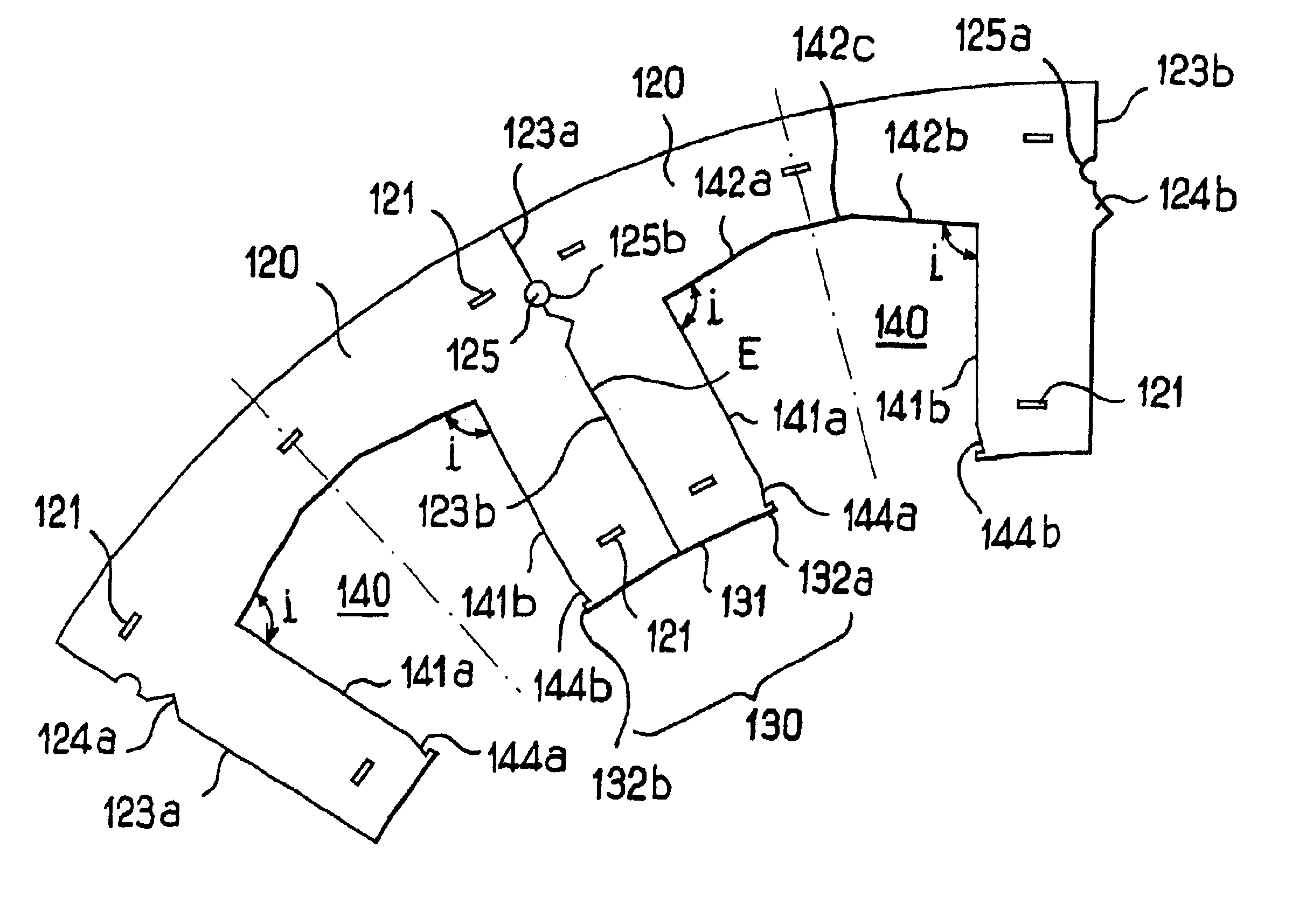Rotary electric machine having a flux-concentrating rotor and a stator with windings on teeth
a technology of rotary electric machines and stators, which is applied in the direction of rotating parts of magnetic circuits, hoisting equipment, magnetic circuit shapes/forms/construction, etc., can solve the problems of machine not being designed to rotate at high rotational speeds, the rotors are relatively complex, and the rotors are becoming detached
- Summary
- Abstract
- Description
- Claims
- Application Information
AI Technical Summary
Benefits of technology
Problems solved by technology
Method used
Image
Examples
Embodiment Construction
[0057]FIGS. 1 to 4 show a synchronous motor 10 of the invention comprising a stator 100 and a rotor 200. The motor 10 is brushless, it has a flux-concentrating rotor, and its stator has windings on teeth, and it operates on three-phase AC.
[0058]The stator 100 has a steel case 110 with a lateral opening 111 in particular for passing electrical conductors for powering the stator windings. On the outside, the case is provided with fixing tabs 112 and with a hook 113 for hoisting purposes.
[0059]In the example shown, the stator 100 has a magnetic circuit that comprises a plurality of identical sectors 120, one of which is shown in isolation, in perspective in FIG. 6.
[0060]Each sector 120 is constituted by a stack of identical magnetic laminations that are superposed and clipped together so as to constitute a unitary assembly, with clipping being obtained using a conventional technique whereby each lamination is subjected to spot deformation at a plurality of assembly points 121. Using a ...
PUM
 Login to View More
Login to View More Abstract
Description
Claims
Application Information
 Login to View More
Login to View More - R&D
- Intellectual Property
- Life Sciences
- Materials
- Tech Scout
- Unparalleled Data Quality
- Higher Quality Content
- 60% Fewer Hallucinations
Browse by: Latest US Patents, China's latest patents, Technical Efficacy Thesaurus, Application Domain, Technology Topic, Popular Technical Reports.
© 2025 PatSnap. All rights reserved.Legal|Privacy policy|Modern Slavery Act Transparency Statement|Sitemap|About US| Contact US: help@patsnap.com



